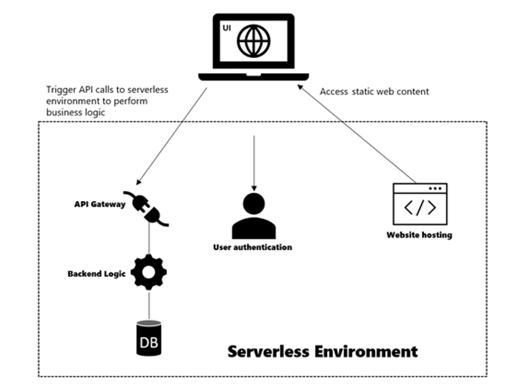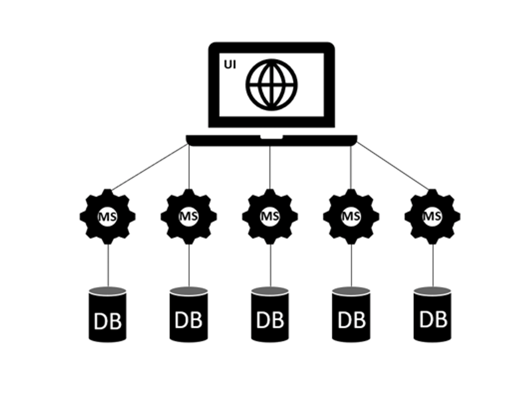As the use of technology continues to become an increasingly critical differentiator for most businesses, organizations must find a balance between future technology-related flexibility and return on their current technology investments. The decision to move on with an upgrade of a software application or data stack or just move to the cloud is not easy. Sometimes during this process, companies fail because they are not well-informed or do not have the proper guidance during the process.
If you decide to move to the cloud, you also must consider how your application is architected so that you can squeeze the advantages of using the cloud services and the options the cloud provides to support distributed processing, scalability, high availability, etc.
Companies need to think about the long-term before even starting a software development project. These needs are solved at the level of architecture: business owners want to ensure agility, scalability, and performance.
The top contenders for scalable solutions are serverless and microservices. And, sometimes, one is more suited for the job than the other. Both architectures prioritize security but approach it in their own ways. Let us look at how businesses can benefit from the adoption of serverless architecture vs microservices, examine their differences, advantages, and use cases.
Key Differences Between Microservices and Serverless
Microservices offer long-term solutions. Each service can run 24/7 with no interruptions or minimal downtime. It is a great, and permanent solution for teams that have multiple technology stacks.
Functions in serverless are oriented to code efficiency. Functions are not long-term, like microservices. The functions are only executed when there is a specific condition or input. Serverless architecture is event-driven, which means that if there is no trigger, the function will not execute. The application does not consume more CPU than needed, resulting in a cut in the costs of computing and storage space.
Infrastructure
Microservices rely on what the development team resources know and do. For instance, implementation of monitoring, deployment, support, and maintenance. Infrastructure is the responsibility of the Operations / DevOps team.
Serverless, on the other hand, relies on a third-party vendor (cloud services vendor). The infrastructure, security, space, and computing are not the responsibility of the development team. Instead, these are handled by the cloud vendor. This allows reducing project costs.
Cost
Developing microservices can be more expensive at the initial stages. You may need multiple team members to handle the project and set up the required components. Depending on how it is deployed, it increases the cost of development and maintenance.
The main competitive advantage of serverless architecture is the possibility of reduced costs. This architecture allows you to share resources, which means lower operational costs. Also, you only pay for what you use and you do not have to maintain any hardware.
A Deeper Dive into Serverless
Serverless allows the developer to focus on the application implementation, not the infrastructure.
The developer just focuses on the logic and the code runs on stateless compute containers managed by the cloud provider.
Serverless does not mean there is no server, but it means you just worry about the implementation of the logic.

Why Choose Serverless?
• Serverless functions only execute when needed.
• Aligns well with applications that are event-driven, especially when the events are sporadic, and the event processing is not resource-intensive.
• Excellent choice when developers need to deploy fast and there are minimal application scaling concerns.
Advantages
• Using this architecture, you only pay the fee for the execution time of the service running the code.
• An important thing to keep in mind is that you do not have to worry whether the workload is high or low and autoscaling is handled by the serverless infrastructure or service.
• You only need to focus on the development of the business rules instead of the infrastructure.
• Improved scalability since it is easy to increase the storage capacity or computing power at any moment and reduce back to normal when the consumption of the resources reduces.
• Decreased latency since the major public cloud vendors have datacenters all over the world, which reduces the request/response path.
Disadvantages
• Hard to code and debug.
A Deeper Dive into Microservices
Microservices are large application that is split and separated into a suite of singular modular pieces. Modules or ‘services’ are loosely coupled and each microservice focuses on a single aspect of applications features. It can have a simple interface for communication with other services e.g., REST API and each service can have its own data store.
The microservice architecture is essentially a decentralized application that has been divided into a range of smaller modules, also known as services. Each of them is responsible for the perfect execution of an individual function. Microservices are narrowly specialized, and each microservice performs one task.

Why Choose Microservices?
Microservices are best suited for long-running, complex applications that have significant resource and management requirements.
Advantages
• Allows the code to be partitioned and each piece is independent of the others, you can pick the technology stack that suits better for the logic you need. This also allows you to have your team of developers work with the language that they feel comfortable with.
• Code partitions are isolated and can be managed separately., This allows you to do easier and quicker continuous integrations.
• The upgrades or changes can be applied easily without causing other parts of the application to fail.
Disadvantages
• When the number of components or services is large, it adds extra complexity and increases the time of the implementation.
• This complexity sometimes adds more overhead to the development life cycle.
Choosing between Serverless and Microservices
As a rule of thumb, choose serverless computing when you need automatic scaling and lower runtime costs, and choose microservices when you need flexibility and want to migrate a large and legacy application to modern architecture.
Cost can be an important differentiator between serverless and microservices. This relates back to the previously mentioned difference that serverless only operates when the application must execute a task, while microservices operate continually Serverless computing products, such as AWS Lambda, Azure Serverless or Google Cloud Functions work on a pay-as-you-go model, which means the provider only charges for the specific period that the server executes the function. While it is cheap to provision microservices on containers, you pay for the instance to run 24/7, even if there is no load.
The choice is not always between serverless and microservices, because some applications rely on both. Microservices and serverless integrate and complement each other's strengths and weaknesses. You can choose to deploy microservices as part of serverless architecture, or you can host them in containers. Remember to consider portability issues, because serverless applications can only deploy within their respective vendor's infrastructure.
Combining Serverless and Microservices
There is no need for the development teams to choose between a serverless and microservice architecture. Microservices can be developed as a set of event-driven functions and stored on the third-party vendor’s infrastructure.
Here’s how development teams can approach building a combined system without choosing between microservices architecture vs serverless architecture.
• To be serverless, microservices should be event-triggered. Microservices should respond to conditions and user actions to work as a function.
• Developers can increase the viability of serverless functions by integrating them together. It can be done with Logic Apps (Microsoft) or Step Functions (Amazon). These tools allow assigning triggers to microservices and combining several functions into a service.
• Transfer to the cloud is crucial. Serverless development heavily relies on cloud storage and computing. If you are considering implementing certain principles from serverless architecture, switching to a cloud infrastructure should be your first move.
Want to know more about how Encora can take your business to the next level?

